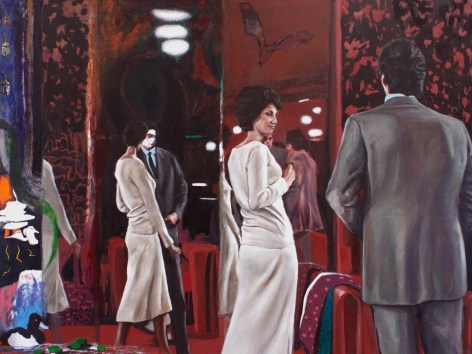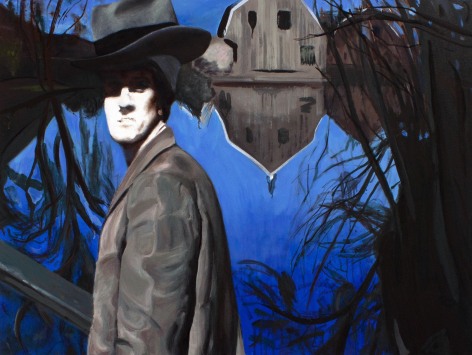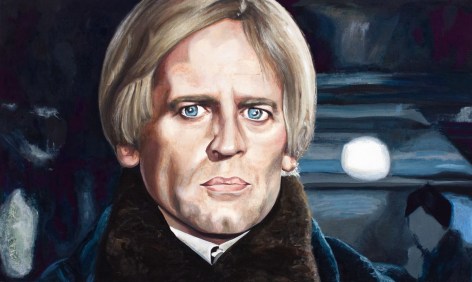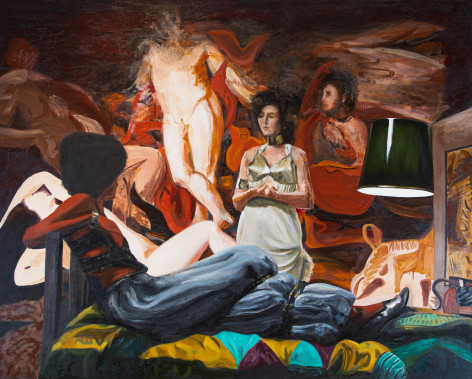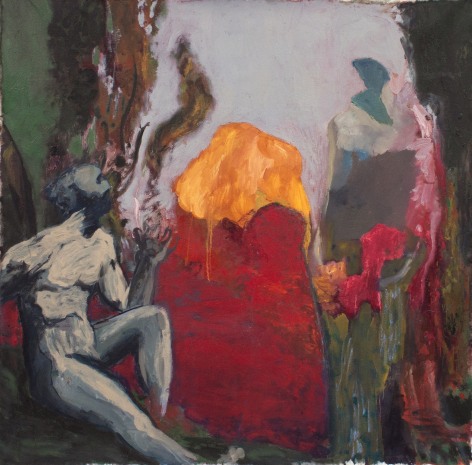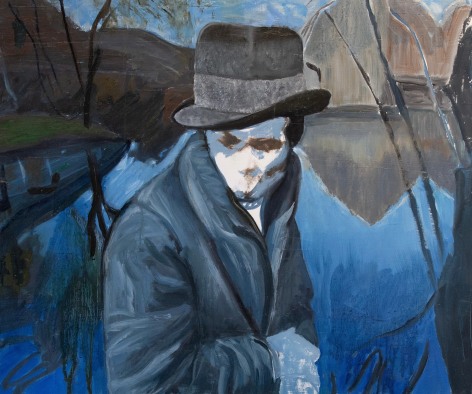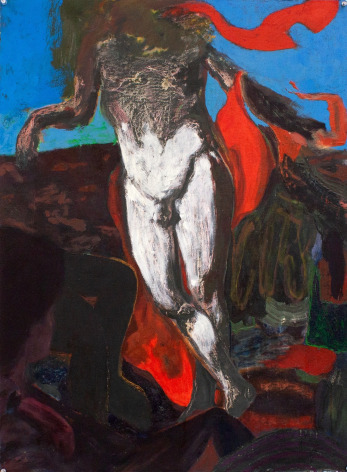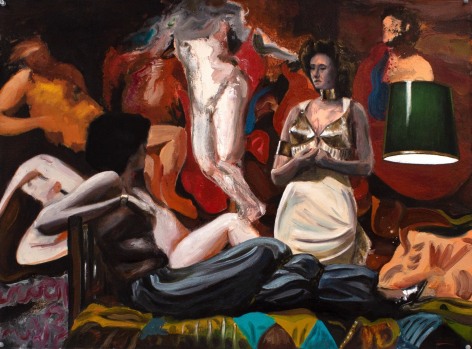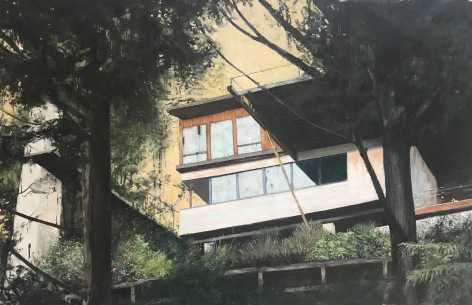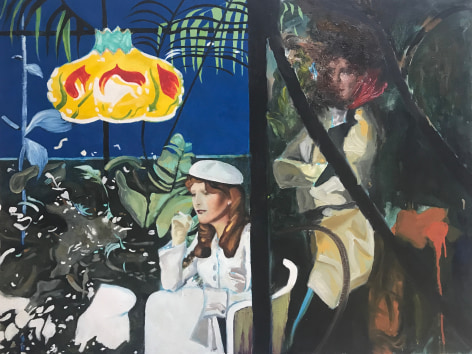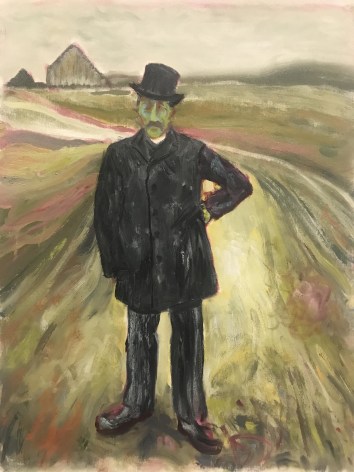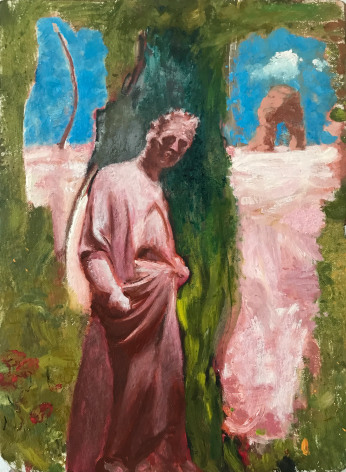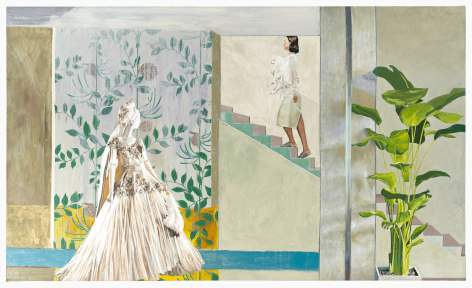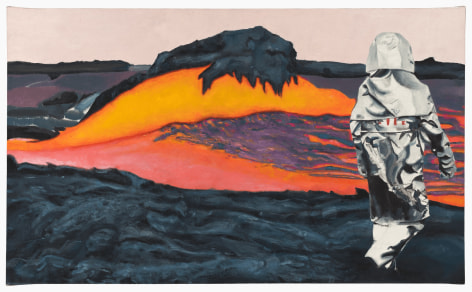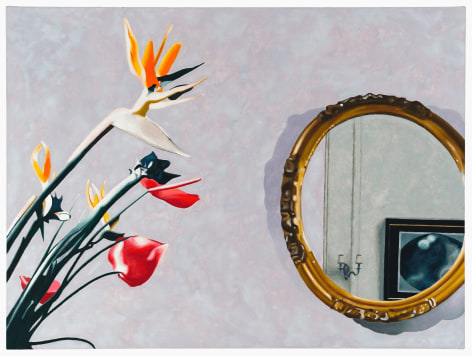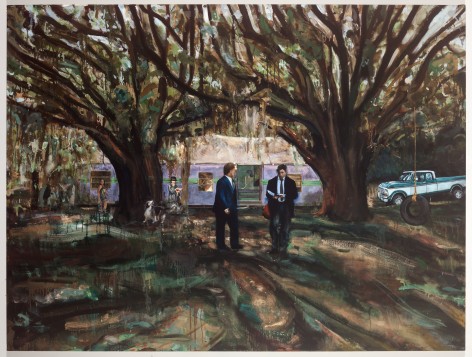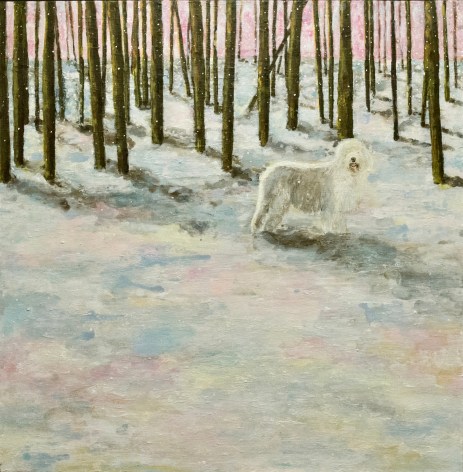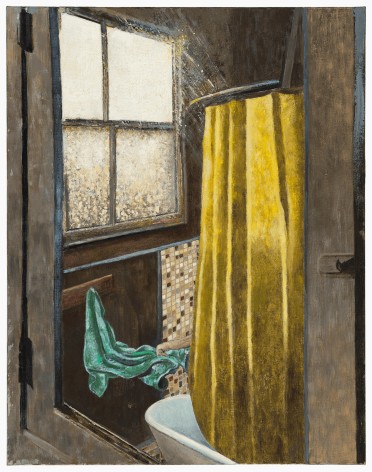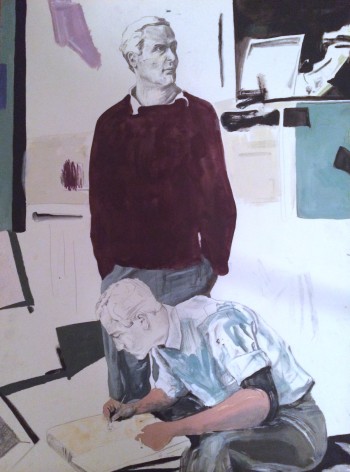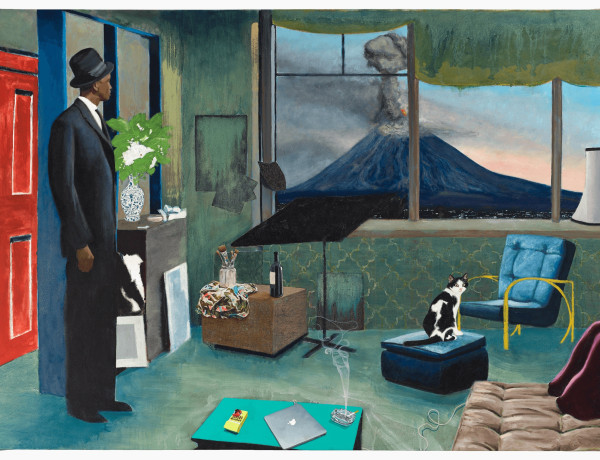
Pull Quote
"The paintings are composed from film stills that, for their theatrical costume and anachronisms, cannot be mistaken for documents of reality, and the unreality of those images deepens as they are removed from narrative sequence, isolated, and made static in paint."
Biography
A N D R E W L Y M A N | | | biography
[lives & works – Philadelphia, PA ::: b. 1991, Dallas, Texas]
ANDREW LYMAN was born in Dallas, TX in 1991, where he spent his first eighteen years. He drew a lot growing up, favoring the sense of order and control it gave him, and did not begin painting in earnest until his twenties, when he lived in New Orleans. Now, he expects it would take multiple lifetimes for him to cease being surprised and delighted by making oil paintings.
His artistic practice is largely inspired by other people’s creative expression, which he often references in his own paintings, and his main artery of work has always been figurative. Among the many artists who inspire him are the painters Edvard Munch, Matisse, Bob Thompson, Markus Lupertz, Peter Doig, Nicole Eisenman, Peter Paul Rubens, and Luc Tuymans. The writers JRR Tolkien and WG Sebald are constantly present. Movies provide much of the imagery from which Lyman’s paintings embark, and the filmmakers RW Fassbinder, David Lynch, Sergio Leone, and Ozu are favorites.
He earned his MFA in Painting from Boston University in 2023, and he hopes to paint and teach painting. Lyman’s paintings have been exhibited in New Orleans, Boston, and New York. He is currently living in Philadelphia, PA.
Artist Statement
My paintings use established pictorial ideals associated with class, beauty, and taste as a framing device for capturing the modern prevalence of anxiety and social alienation. The paintings are composed from film stills that, for their theatrical costume and anachronisms, cannot be mistaken for documents of reality, and the unreality of those images deepens as they are removed from narrative sequence, isolated, and made static in paint. I choose imagery containing clear emotional cues that might retain a quick legibility, even after being removed from its original filmic context. The immediate read comes from that which is familiar, and what is familiar in the paintings works as window dressing to obscure something more unsettling in the back room. That is where the hand and the paint do their work. Since the image has been hollowed of its narrative implications, I remain open to material-guided improvisation while painting, which results in new elements being added or removed from the initial composition. I want to recreate the image, not reproduce it.
The paintings ricochet across polarities, resisting easy legibility. Areas of carefully rendered detail might exist beside hasty, automatic painting, and fastidiously arranged compositions taken from film stills are interrupted by inexplicable pieces of imagery culled from my own imagination or the internet. What is modern commingles with the antique. The imagery errs toward the dramatic, but it is not wholly paid off in feeling because it is not from life. The paintings are packed with information, and seem to pay homage to art history and established visual ideals, but they feel hollowed out and detached, speaking to the immense landslide of imagery that confronts and confuses modern life.
Starting with source imagery originally conceived by someone else creates a sense of separation between the paintings and their realization. I hope to avoid moralism in my paintings, and having some distance from the original imagery helps stave off what is heavy-handed or specifically personal. Stanley Cavell said “a painting is a world; a photograph is of the world.” Paintings are uniquely contained, while still offering the possibility of endless depth, and it is my belief that a painting performs its image anew each time it is looked at. By painting imagery suggestive of wealth, there is an imperviousness granted to the characters inside the painting. Wealth protects against circumstance. Because there is no sense of outside threat, whatever is wrong — and it does feel like something is wrong — must be within the image. In place of material poverty, there is suggested a poverty of the spirit. It is the difference between ‘threat’ and ‘danger.’ Danger is immediate, definable, and not terribly interesting. A threat is a feeling; it does not have to be rational, and it does not even need to be real. The characters in my paintings are meant to operate in suspended time, and I believe their heightened social standing allows them to exist apart from the world and its dangers, discrimination, and need. On the painted stage, these characters perform leisure, but are consumed and surrounded by angst.
CV
EDUCATION
2023 MFA Painting, Boston University School of Visual Arts
2014 BA, Sewanee University
SOLO EXHIBITIONS
2024 (Forthcoming) Andrew Lyman, Ferrara Showman Gallery, New Orleans, LA
GROUP EXHIBITIONS
2023 Into The Thicket, Morgan Lehman Gallery, New York, NY
2023 MFA Thesis Show, Boston University Art Gallery
2021 No Dead Artists, Ferrara Showman Gallery, New Orleans, LA
2021 Louisiana Contemporary, Ogden Museum of Southern Art, New Orleans, LA
2020 Louisiana Contemporary, Ogden Museum of Southern Art, New Orleans, LA
PUBLICATIONS
2023 “Create! Magazine” Issue No. 27.
2021 “Studio Visit Magazine” Vol. 49 + 50.
2021 “New American Paintings” No. 154.
2020 “New American Paintings” No. 142.

